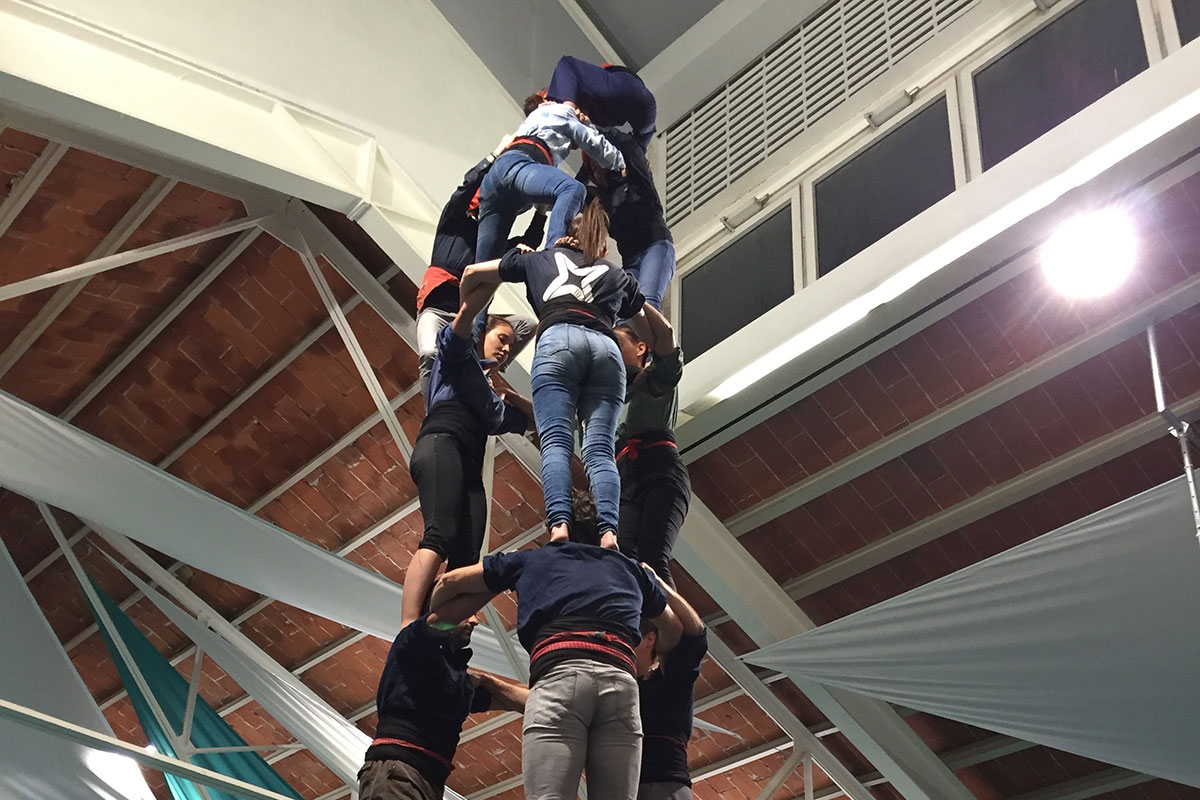What Stories to Share?
2018 Catalonia Program Update

Always looking for new ways to keep people engaged in our work, even as it is unfolding, we will provide regular updates on the planning and development of the Catalonia program for the 2018 Folklife Festival.
At the end of March, I had the honor of delivering the closing remarks at The Culture that Is Coming: The Future of Catalan Culture, a two-day symposium organized by the Catalan Department of Culture at the Joan Miró Foundation in Barcelona. The conference addressed a range of themes, but the closing focused on Catalan participation in the 2018 Festival. After laying out key dynamics in Catalan heritage, I asked the audience what stories of Catalan culture they wanted to share with the American public. (See video of the presentation.)
While in Barcelona, Ester Plana and Quim Rutllant interviewed me for Mans, a program on popular and traditional culture broadcast on Cataluyna Radio. Our conversation explored the Festival’s history and goals and the reasons why we invited Catalonia to participate in the 2018 Festival, which will focus on cultural heritage enterprise around the world.
With generous help from Oriol Francolí and Agnès Garreta, I visited an evening practice of a human tower team, the Castellers de Vila de Gràcia. Francolí helped found the team twenty years ago, and Garreta currently serves as vice president. We shared images from the evening on our Instagram feed with the tag #FolklifeFieldTrip.
Later in the week, I traveled to Vilafranca to visit the Castellers de Vilafranca, eight-time winners of the biannual human towers competition. Even though it was early in the training season, the team was already raising some very complex and impressive towers. Thanks to Miquel Ferret, Joan Badell Rosés, and the rest of the team for opening their doors to us.
On March 27 a delegation from Catalonia visited our staff in Washington, D.C., to continue conversations about the program. The delegation included Carles Puigdemont, President of the Autonomous Government of Catalonia; Raul Romeva, Councilor for Institutional and External Affairs and Relations; and Andrew Davis, Delegate of the Autonomous Government in the United States. After an animated discussion about the Festival and the role of living culture in Catalonia, the delegation toured the National Mall to see where the Festival will take place.

The following week the Festival team met with Maria Molina, the cultural attaché from the Spanish Embassy in Washington, D.C., to discuss whether or not the program would reflect recent political tensions in the region. As we explained, the Festival has a long history of presenting cultural life in a way that is not politicized, and we are committed to keeping this program focused on the increase and diffusion of knowledge about living cultures.
We are currently exploring a media partnership with La Xarxa Comunicació Local. A network of local TV stations with a long history of presenting popular and local culture, La Xarxa might produce short documentaries of featured cultural expressions and to share the events of the Festival with people back in Catalonia in 2018. La Xarxa also produces live events, like human tower competitions or other popular traditions, and may seek to share these with an American audience in collaboration with U.S. broadcasters or through a sponsorship.
In May, I will return to Catalonia along with Festival director Sabrina Lynn Motley and program coordinator Pablo Molinero-Martínez. Our next steps will focus on convening a planning session with Lluís Puig i Gordi and other members of the professional team at the General Directorate for Popular and Traditional Culture of the Department of Culture. We will also bring together a group of curators, presenters, scholars, and cultural producers to brainstorm the main messages of the program. David Ibánez, artistic director of the Fira Mediterrània de Manresa, and I will serve as co-curators. Together we will seek to answer the question, “What stories about Catalan culture should we share with the American public?”
We will also participate in a public recognition of Catalan singer and folk hero Raimon at one of his last concerts at the Palau de la Música Catalana. Raimon recorded an album in Catalan on Folkways Recordings in the early 1970s at a time when tensions were high with the Franco dictatorship, and we are pleased to honor him for his willingness to serve his country, his language, and his art form.
We look forward to hearing your ideas about the Catalonia program at the 2018 Festival. You can reach us at folklife@si.edu.
Michael Atwood Mason is the director of the Smithsonian Center for Folklife and Cultural Heritage and the co-curator for the Catalonia program.

